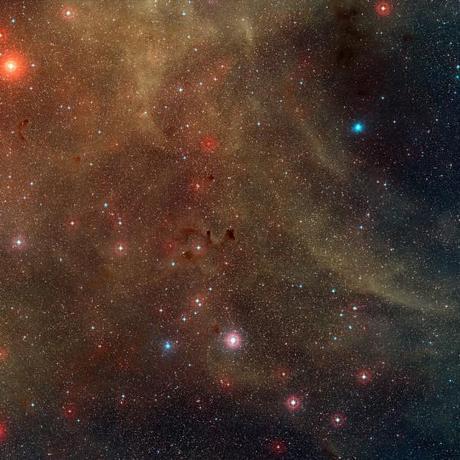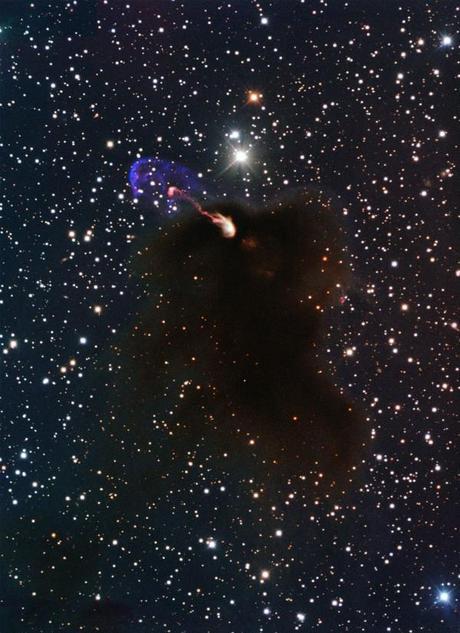How good to celebrate our God in song;
how sweet to give fitting praise.
The Lord . . . heals the brokenhearted,
binds up their wounds,
Numbers all the stars,
calls each of them by name.
(Psalm 147:1-4)

This stunning image of the birth of a star with colorful energetic jets combines both radio and visible light observations from some of the largest telescopes in the world located in Chile.
Credit: ESO/ALMA (ESO/NAOJ/NRAO)/H. Arce. Acknowledgements: Bo Reipurth
Andrew Fazekas reports for National Geographic, Aug. 22, 2013, that a giant radio telescope in the Chilean desert finally captured what astronomers have long sought — photographic evidence of the birth of a star like our Sun.
Thanks to the high resolution imaging capability of a new giant radio telescope array called the Atacama Large Millimeter/submillimeter Array (ALMA), astronomers have managed to snap images of the first moments of life of a star in never-before-seen, stunning detail.
The ALMA observations reveal powerful jets of carbon monoxide shooting out from opposite sides of a glowing mass of gas that’s home to a newborn star. The jets in colors of orange and green in the lower right of the above image are moving away from us. Another jet, visible in pink and purple towards the left of the baby star, is beaming towards Earth.

This wide-field view shows a rich region filled with sdust clouds and tar factories in the southern constellation of Vela. Close to the center of the image are the jets of the Herbig-Haro object HH 46/47 emerging from a dark cloud filled with newborn stars. Credit:
ESO/Digitized Sky Survey 2. Acknowledgement: Davide De Martin
The object—which shines in a kaleidoscope of colors—is called Herbig-Haro 46/47. It was named for the astronomers who first studied their spectrum in detail—and sits some 1400 light years from Earth in the southern constellation Vela.
The speeds at which the jets are spewing out material has stunned scientists. Clocked at nearly 620,000 miles an hour, these blasts slam into surrounding gas and dust—making them light up like neon signs.

This image from ESO’s New Technology Telescope at the La Silla Observatory in Chile shows the Herbig-Haro object HH 46/47 as jets emerging from a star-forming dark cloud.
Credit: ESO/Bo Reipurth
Up until now, a large, dark, dust cloud has made parts of these jets near invisible — as seen in the above visible light image taken by ALMA’s neighboring observatory, ESO’s New Technology Telescope (NTT). However with the combined power of 66 antennae working together, astronomers have been able to pull back the veil of obscuring dust and capture in stunning detail the birth of a faraway star.
~Eowyn

